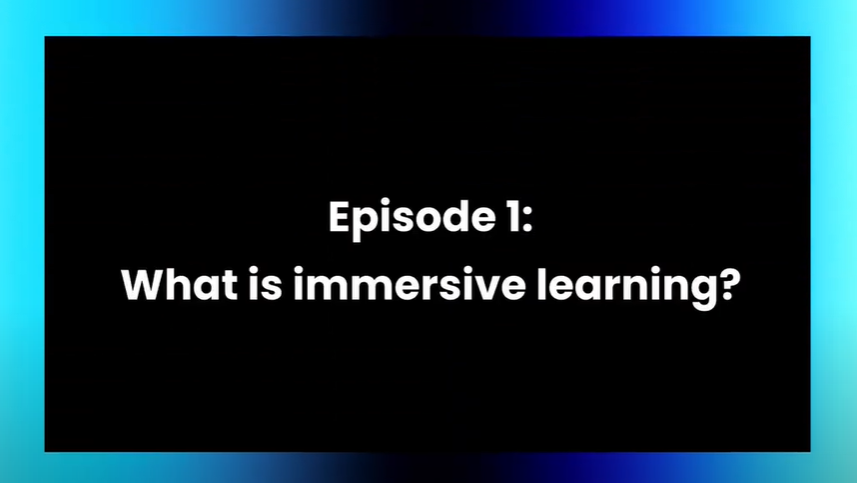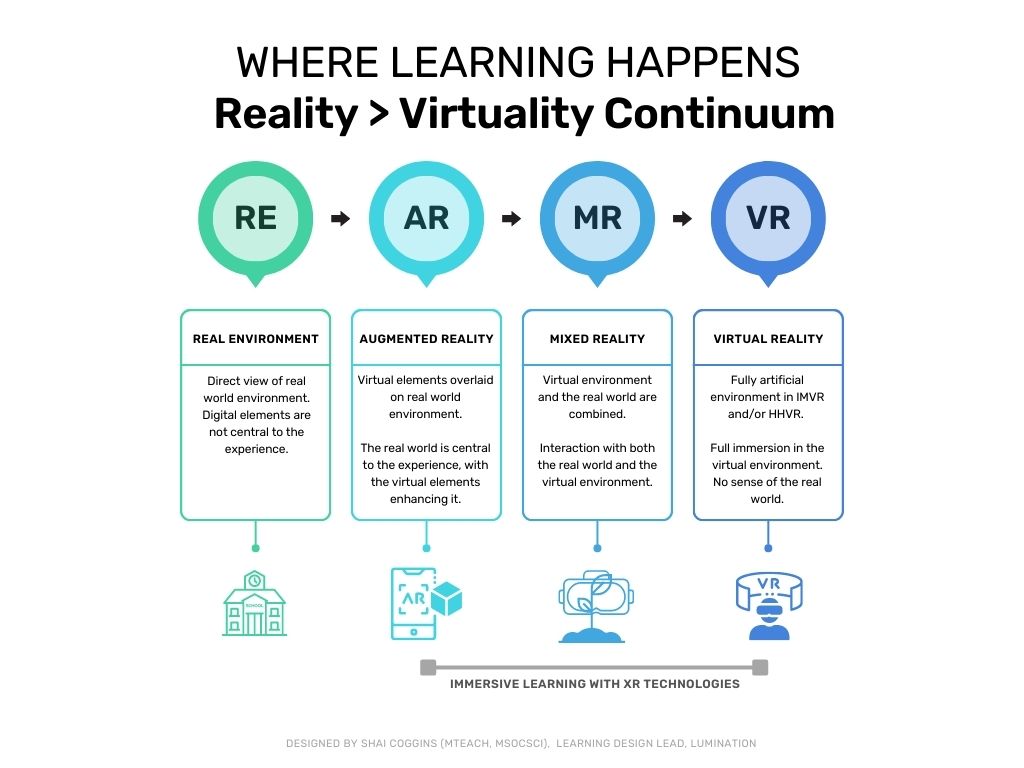Unit A: What Is Immersive Learning?

Welcome to Unit A of Module 1 in this course! This unit gives you an overview of immersive learning.
Please watch Episode 1 of our ImmersEDU video series below and respond to the quiz to complete this module.
Pre-Intro: Can you imagine being able to teach subjects like geography where you can take your students on excursions around the world without ever leaving the classroom? Or perhaps, giving your science students the opportunity to learn anatomy by interacting with virtual models of the human body? How about being able to equip your students on how to build worlds and models where the only barriers are time and imagination? With immersive learning, you can.
[Series Title Animation]
Intro: Welcome to ImmersEDU! I’m Shai Coggins, immersive learning specialist and Learning Design Lead at Lumination.
So, what is immersive learning? To put it simply, it’s a pedagogical approach where you use technologies like virtual reality and augmented reality to enhance educational experiences. It brings real world learning straight into the classroom in an engaging and enriching manner.
So, instead of your students just reading about Ancient Egypt, they can actually visit an Egyptian tomb using VR. They can also explore relics using AR as though they’re in a museum. They won’t even get into trouble for touching the relic!
Don’t get me wrong. I absolutely love books and reading. They’re essential parts of learning. But, just picture how much more engaging it would be if your students could actually experience what they’re learning. This is the power that immersive learning brings to the classroom.
Expound: But, does it really work? Isn’t VR and AR mostly used for playing Beat Saber or Pokemon Go? It may seem gimmicky, but there are actually a few things that teachers can do to include these types of fun Extended Reality games in the classroom. There are also many educational apps that provide great learning opportunities for students.
Based on initial studies in immersive learning, researchers have found several benefits of using VR and AR in the classroom.
First, student engagement with the topic is higher when using immersive technologies. Teachers who use immersive learning in the Lumination Learning Labs, for example, have reported an average of 70 to 80% student engagement scores.
Researchers have also found that when students use immersive learning, they retain more information compared to when they just read the same information. They are also able to retain such knowledge for longer periods. So, being able to explore inside a virtual body can be more effective than just reading about anatomy in a science textbook or website. There have also been reports where the right VR experiences enabled learners to transfer skills gained virtually into real life settings.
Outro: So, if you haven’t tried using immersive learning in your teaching practice just yet, do give it a go. There are several resources on the Lumination website to help you to get started. If you would like to speak to a fellow educator to see how you can start your immersive learning journey, please don’t hesitate to reach out and leave a comment. We would love to hear from you. If you enjoyed this video, please don’t forget to like and subscribe so you can get notified when we share a new episode from our education series. See you next time at ImmeseEDU!
In a traditional classroom, learning only happens in a real world environment. However, advancement in technologies have now enabled us to explore learning in Extended Reality (XR) environments – be it Augmented Reality (AR), Mixed Reality (MR), or Virtual Reality (VR).
To learn more about research in this field, please read: 5 Things Research Shows About AR and VR Teaching Tools.

Here at Lumination, we recommend the following scope and sequence for the adoption of XR technologies across the learning years (from junior primary to senior school):


